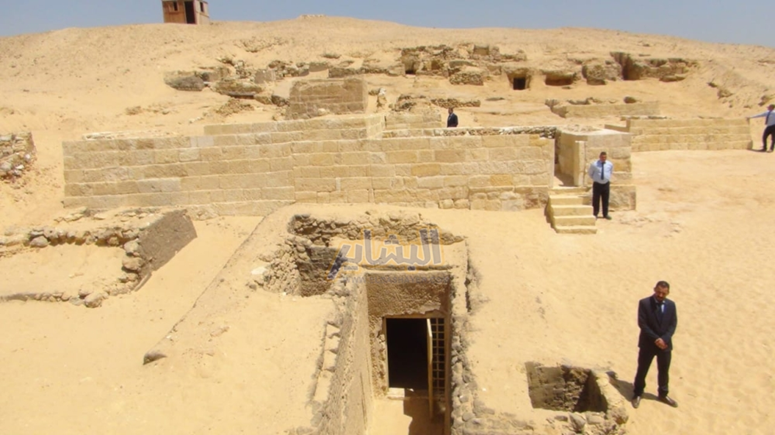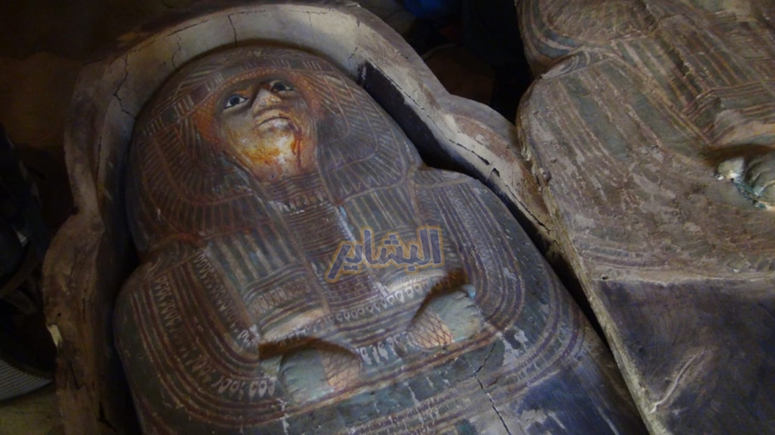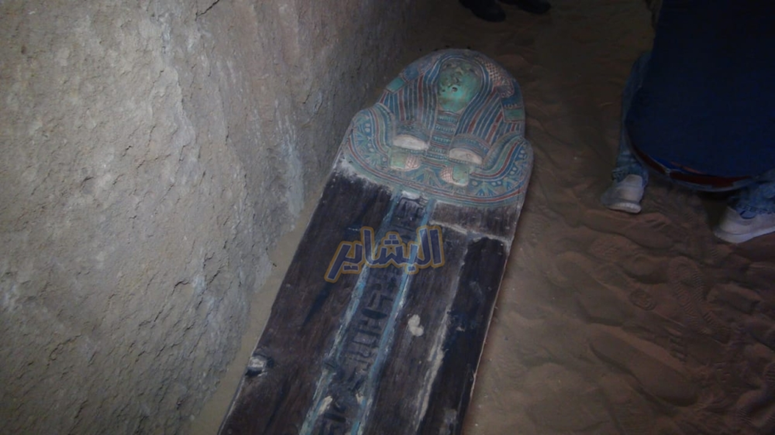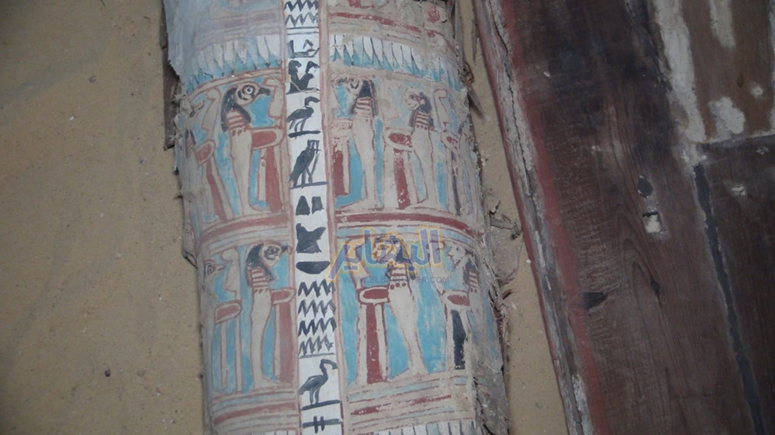The discovery of the tomb of the priest “Heno-Ka” and “Noy,” the greatest judges of the Pharaohs, in the pyramids.. Pictures

The cemetery dates back to about 2500 BC
Today, the world has its eyes on Egypt, especially the area of the pyramids in Giza, as the Egyptian Ministry of Antiquities announced today, Saturday, the discovery of part of an ancient cemetery in the area of the Giza Pyramids, which includes a double tomb of a priest and a senior official from the Fifth Pharaonic Dynasty, which dates back to about 2,500 years BC.
The Secretary-General of the Supreme Council of Antiquities, Mustafa Waziri, said during a press conference in front of the excavation in the Giza Pyramids area, “The excavations of the Egyptian mission of the Supreme Council of Antiquities, which began its work in August 2018, raised about 450 cubic meters of rubble, revealing tombs dating back to the late era.” It contains some colorful coffins in good condition, with mummies inside, and a number of archaeological finds.”

Waziri continued, “The oldest tomb discovered at the site dates back to the Fifth Dynasty, about 4,500 years ago, and represents a mass grave built of limestone, for two people, one of whom is called Hanawi-Ka, whose name has not been found before in the area of the pyramid’s ruins.”
He explained, “Bahnu-ka held seven titles, including purifier of King Khafre, King Userkaf, King Niuserre, priest of King Neferirkare, priest of the goddess Maat, and the oldest judge in the courtroom.”

Waziri continued, “While the other is called Nuy, and he held five titles, the most important of which is the head of the large province, the supervisor of the new settlements, and the purgatory of King Khafre.”
The Secretary of the Supreme Council of Antiquities noted, “One of the most important things found inside the cemetery was a limestone statue in a good state of preservation. It represents the owner of the cemetery, his wife, and one of his sons. The statue does not contain any inscriptions.”

He explained that “building limestone tombs required special permission from the king, which means that these two people were close to the kings of the Fifth Dynasty.”
In the same context, the director of the pyramid’s archeology said, “This cemetery was reused for burials on a large scale in the late era, beginning in the seventh century BC, as many wooden coffins with human shapes dating back to that era were found inside it.”

He explained that “brightly colored coffins decorated with various decorations” were found inside the cemetery. Some of them contain a longitudinal strip of hieroglyphic writing in the middle of the lid of some of these coffins. Many faces of colorful wooden and clay masks were also found.”
The discovery was announced in the presence of Dr. Zahi Hawass, former Minister of State for Antiquities Affairs, and one of the most prominent Egyptian archaeologists, who participated in the unveiling of a group of tombs for workers building the pyramid of Khufu in 2010, dating back to the Fourth Dynasty of Pharaohs.

Hawass said, in a speech he delivered during the press conference, “We have only uncovered about 20 percent of our antiquities, and more than 70 percent of the rest is still underground, undiscovered.”
Pictures from the archaeological cemetery that was found in May 2019 in the Al-Ahram area, which dates back to about 4,500 years ago, the Fifth Dynasty, for two noble people. Hanawi was one of them.

Building limestone tombs required special permission from the king, which means that this person was close to the kings of the Fifth Dynasty.”
Source : websites

